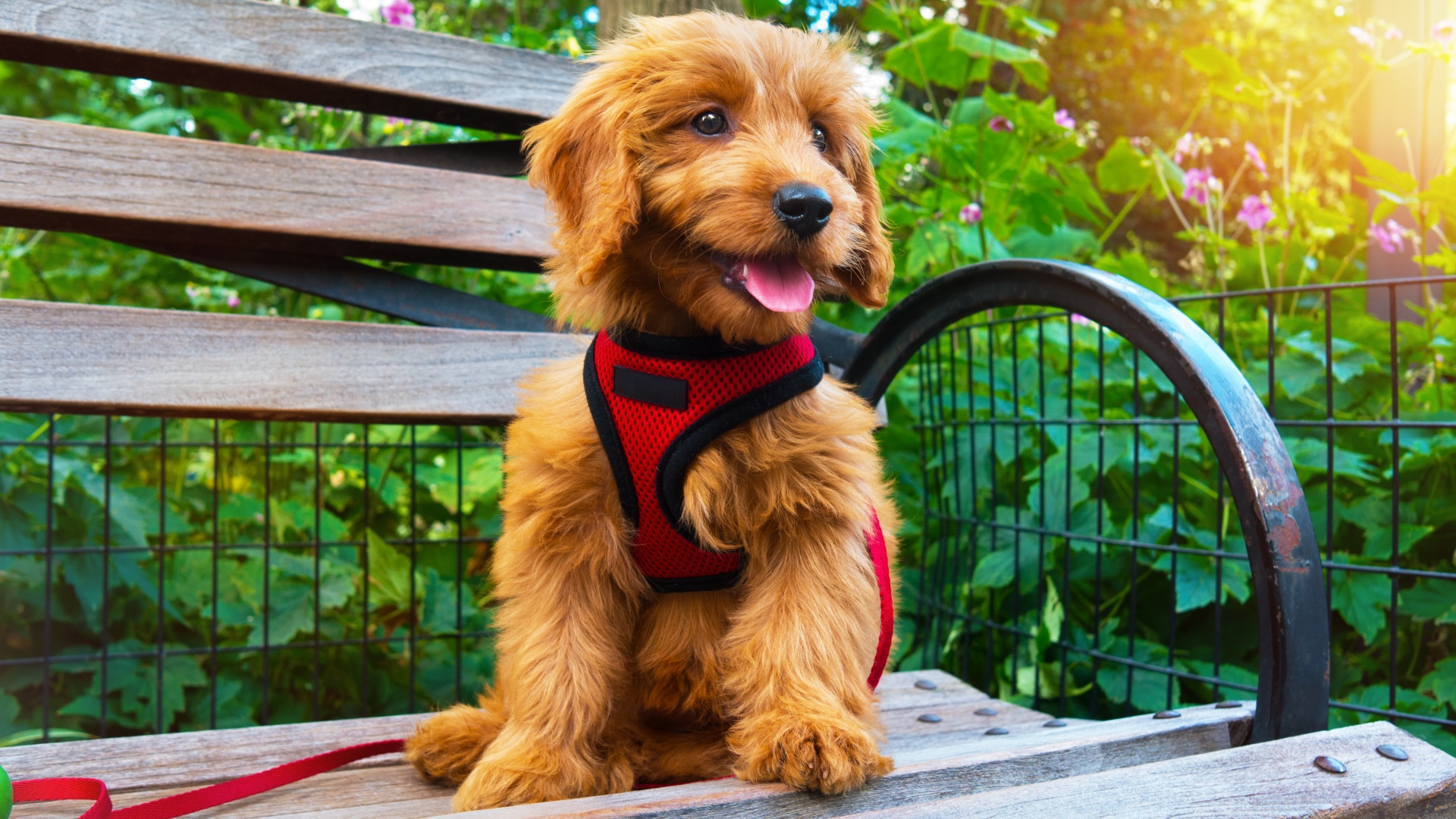Harness vs collar: Which is best for your dog?
In the debate of harness vs collar, which one reigns supreme? We find out!

Harness vs collar, the big debate amongst pet parents rages on! Your dog’s collar is more than just a piece of swag – it’s his identification and your means of control on walks and other adventures. That means choosing a collar for your dog is a big deal. But you may be asking: which is better, a collar or a harness? And how will I know what will fit my dog the best? Before you head out on a canine shopping spree, you’ll need to consider a few factors to help you choose the best product to fit your dog’s needs. Check out our guide below to help you decide whether a harness or a collar is the best pick for your pup.
Consider your activities when choosing a dog harness vs collar
Does your dog just need a place to hang his ID tags? Or will you be using the collar as a place to attach the leash, too? Is your daily routine limited to a stately stroll around the block, or is Fido dragging you for miles as he pulls on the leash? Does your dog wear his collar or harness indoors, or does he prefer to strut about the house naked? Considering these factors can help you begin the process of deciding whether a collar or a harness – or a combination of the two – would be the best choice for you and your dog’s lifestyle. For pups who just need some identification, a flat collar is likely all that is needed. For dogs that pull or those headed out on bigger adventures, a harness or harness and collar combo may be a better fit.
Consider your dog’s size and breed when choosing a harness or collar
When it comes to picking the best gear for your dog, one of the first things you’ll need to consider is your dog’s size. If your dog is currently a puppy, this includes considering your pup’s adult size as well. For small dogs and puppies, a flat neck collar is okay for identification, but shouldn’t be used with a leash as this may put too much pressure on the dog’s neck and throat which can cause injury in a small dog. A harness and leash combination is a better and safer option for small breeds, as this safely distributes the pressure across the dog’s chest and shoulders.
For large breed adult dogs, a flat collar and leash may be an acceptable option and many dogs do well with this combination. However, if your dog is prone to pulling, you may find that harnesses with a chest attachment or a head collar are better options to discourage this pulling behavior. Combined with positive reinforcement training, these tools can help teach your dog that pulling is less rewarding than staying by your side.
Consider your dog’s health and medical history when choosing a harness
If your dog has a history of neck or throat injuries or has experienced medical conditions such as collapsing trachea or intervertebral disc disease (IVDD), you’ll want to avoid collars that put pressure on your dog’s neck and throat. Pulling on your dog’s neck with a flat collar may aggravate a collapsing trachea and can cause pain or even severe injury to a dog with intervertebral disc disease. For dogs with these medical conditions, a harness is a better option to distribute pressure away from the neck and reduce the risk of injury. For dogs that are particularly sensitive around the head and neck, a step in harness may be the best option, rather than one that goes over the head, to limit handling of areas where the dog may be particularly painful.
Avoid products that are based on punishment

Products such as prong collars, choke collars, shock collars (including e-collars, corrective collars, and “stim” collars), and other punishment-based products rely on hurting and frightening your dog to force him to obey. These products are based on outdated and harmful training methods and are not recommended for any dog. Because punishment-based methods such as prong collars rely on hurting your dog to make a point, they often cause fear and anxiety, which only makes your dog’s behavior problems worse. Instead, choose an appropriately sized harness or flat collar for your dog and focus on positive reinforcement training, in which you reward your dog for good behavior. This is the best way to create a well-trained dog who is outgoing, confident, and ready to repeat the desirable behavior again and again.
This feature answers, 'Are prong collars cruel?'
Get the best advice, tips and top tech for your beloved Pets
Make sure your product is sized appropriately
Once you’ve chosen a harness or collar for your dog, it is important to make sure it is the right size for your pup. A harness or collar that is too tight may cause chafing, discomfort, or even injury to your dog, while one that is too lose may allow your dog to slip out and become lost. A good rule of thumb is that if you can fit two or three fingers under the collar or harness, there’s plenty of room for your pup to breathe, so don’t be afraid to tighten it up to that point. For young puppies, make sure you check the fit of the collar or harness each time you put it on – puppies grow rapidly and before long that new harness may become too tight. Be prepared to adjust the fit frequently as your puppy grows to ensure the product remains comfortable and appropriately sized for your pup.
Now you are ready to roam!
Now that you have the right gear, you and your pup are ready to head out on new adventures! Remember to always keep your dog under your control and direct supervision. Check your collars and harnesses frequently for any wear and tear, and swap out any products that are starting to show signs of damage. Remember, collars and tags can become lost or even be removed, so it’s a good idea to get your pup microchipped as well so that he’ll have permanent identification in case he becomes lost or separated from you. Don’t forget to keep your contact information up to date on all tags and on your microchip registration.
You might be wondering, 'Should I use head halters for dogs?'
Dr. Elizabeth Racine is a small animal general practice vet covering all things pet health and wellness. Her special interests include veterinary behavior, nutrition, and internal medicine.
As a freelance writer, Dr. Racine has written content for major companies in the industry such as the American Kennel Club, Merck Animal Health, Bayer PetBasics, Elanco, and CareCredit. In her free time, Dr. Racine enjoys playing trampoline dodgeball, hiking with her beagle Dasher, and spending time with her three mischievous cats.

